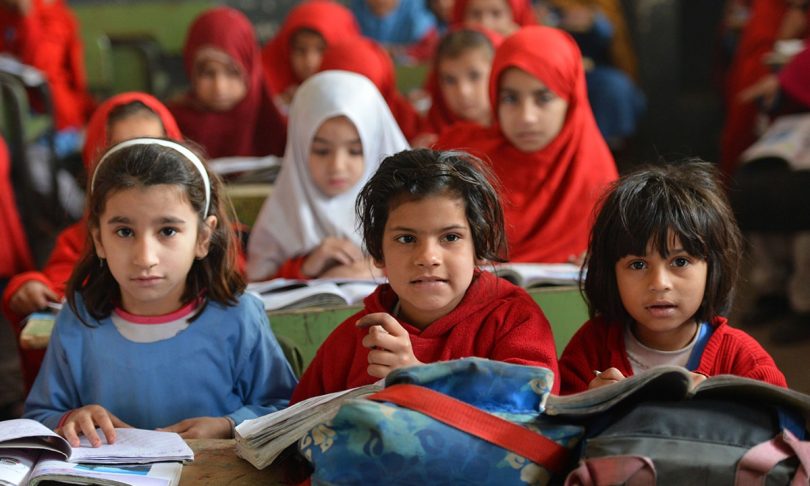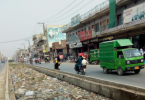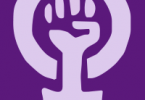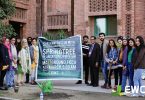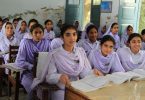Photo by: Abdul Majeed Goraya, White Star Photographic Studio
Reported in collaboration with Syed Wasiq Billah, Malak Sohail Akbar and Komal Noor.
Even as a university professor, Dr Anoosh Khan can’t stay after hours to finish work like her male colleagues.
Hers is just one example of the many economic and cultural barriers Pakistani girls and women face in pursuing a formal education.
While hurdles exist for many citizens regardless of gender, the extra obstacles can make a bad situation even worse.
2013-14 Pakistan Education Statistics show over a third of the country’s primary-school-aged girls do not attend school.
UNESCO data also shows only 40 percent of adult women can read and write, compared to 69 percent of men.
While the situation for women is improving, many Pakistani women still ca not access quality education without financial and moral support from their families.
Barriers to education affect boys and girls
Pakistan’s government-funded schools often lack basic resources, leaving those who can not afford to pay with little chance of a quality education.
University of Peshawar associate professor of gender studies Dr Anoosh Khan says the difference between elite private and government-funded schools is stark.
“[Private schools] have IT facilities, they have well-qualified teachers, they have all amenities that are required by students in a school,” she says.
“Government-sector schools won’t even have a bathroom; they may not even have proper furniture.”
Dr Khan says poorly resourced government schools are particularly prevalent in rural areas which also experience greater levels of poverty.
Additional barriers for girls and women

Girls can face extra hurdles. Photo credit: StarsFoundation on Visualhunt.com / CC BY-NC-ND
University of Peshawar journalism student Amna Ehsan, says men’s education is seen as more important in Pakistan.
“Even though the female population of Pakistan is above 50 per cent, Pakistan is a male-dominated country and man is considered dominant in all fields of life,” Ms Ehsan says.
Dr Khan says cultural and societal expectations often shortchange women of educational opportunities.
“The general mindset is that a girl has to get married and she has to go to somebody else’s house,” she says.
“It’s not that people don’t believe [in female education], it’s more that sons are going to be a better investment because in some way they believe they’re going to support them in their later life.”
Unsurprisingly, the education department of Pakistan’s Khyber Pakhtunkhwa province showed around 530,000 girls were in paid private education in the region, compared to 1.18 million boys between 2015-2016.
Cultural ideas about a woman’s honour, particularly from early adolescence, compound these problems.
Dr Khan says once girls have gone through puberty they are expected to enter public spaces with a male chaperone, even while she is studying or working.
“I can’t sit alone in my office, not because I’m scared or because there’s some kind of danger, but the fact is, in our culture, if anybody walks in they’d wonder: ‘what am I doing alone?’,” she says.
“Nobody’s going to wonder that about a man.”
Family support crucial for women
University of Peshawar student Mashaal Ayaz says she would never have made it to higher education in Pakistan without the financial and moral support of her family.
Her father paid for her to be privately educated from nursery through to matriculation, and this allowed her to have a largely positive experience of education in Pakistan.
“They provided me with every facility plus I belong to an educated family…so it’s easy for me to get education,” Ms Ayaz says.
Another journalism student at the University of Peshawar, Zoona Javed, says her uncles resisted her education, and that made her experience more difficult.
But it was the unwavering support of her mother and brother that allowed her to make it to a masters level of study.

Private schools have many facilities. Photo credit: StarsFoundation on Visual Hunt / CC BY-NC-ND
Things are getting better
“The world is changing and Pakistan is also changing,” Ms Javed says.
Ms Javed says women are now employed in a range of jobs, such as being photographers or working in the tourism industry.
“Families who are against female education are now sending their daughters for higher education like their sons,” Ms Ehsan says.
Ms Ayaz says that some of the changes are reflected in government policy.
“In Peshawar [we] now have three universities for women here…a large number of girls are getting a good quality of education here,” she says.
In 2003, the Punjab province in Pakistan introduced the Female School Stipend Program, which offered 2,400 rupees per year to families of schoolgirls in grade six to 10 in low literacy districts.
Dr Khan says while the change is slow, it’s moving in the right direction.
“I always believe in change that is slow because something that is slow has more long-lasting impact as opposed to something that is quick and abrupt,” she says.
“Slow and steady always wins the race.”

